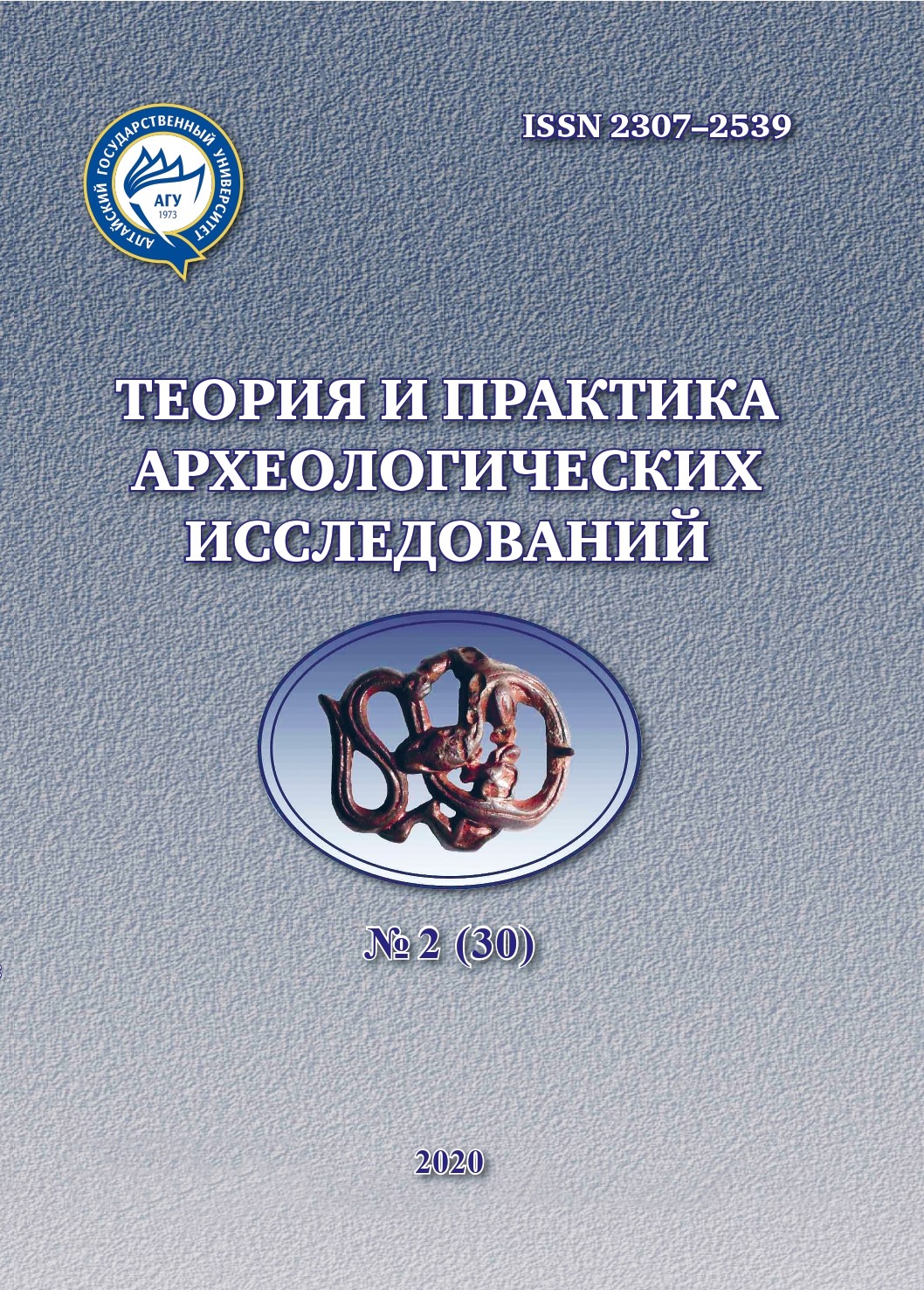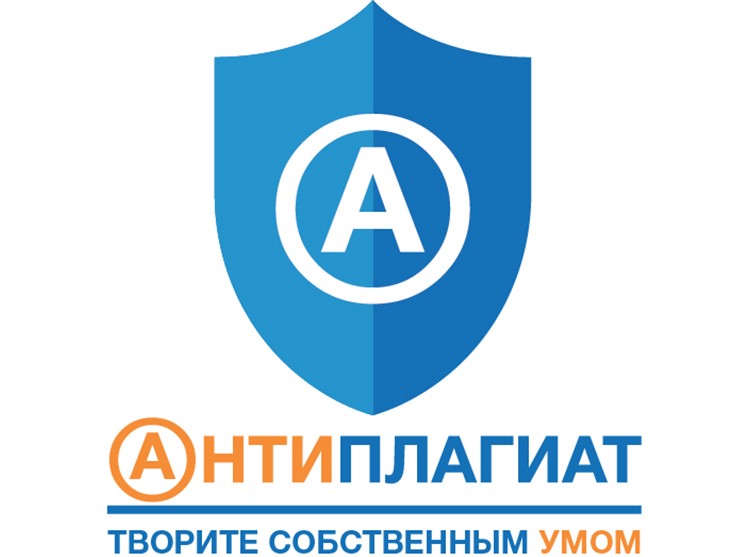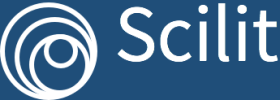MANUFACTURING TECHNIQUES AND CHEMICAL COMPOSITIONS OF METALS, DETERMINED BY INDUCTIVELY COUPLED PLASMA MASS SPECTROMETRY, IN TOREUTICS OF THE HIGH MIDDLE AGES FROM THE TOMSK OB REGION
Abstract
The paper presents a morphological analysis of toreutics, such as belt sets and horse bridles, from mounds of the Basandaika burial ground and the burial ground at the mouth of the Malaya Kirgiska River. Graves from mounds No. 27 and No. 77 in the burial ground at the mouth of the Malaya Kirgiska River can be classified as elite graves in terms of funeral rites and the artifacts found in them. These are graves of military horse riders. In mound No. 27 a shoulder harness, possibly with a belt fragment, was found. In mound No. 77, a belt decorated with gilded plaques was found. These items indicate a high social status of the buried men. In total, 11 items were sampled from two mounds for analysis. In order to study manufacturing techniques of the metal toreutics, inductively coupled plasma mass spectrometry was used. The analysis for 61 chemical elements identified four types of copper alloys: copper, lead bronze, tin-lead bronze, and brass. Some items are gilded using amalgamation. Possibly, an alloy of gold and silver (electrum) was also used for gilding. Some design features of the metal parts of military belts and bridles, as well as associated manufacturing techniques were identified.
Downloads
Metrics
References
Basandajka: sbornik materialov i issledovanij po arheologii Tomskoj oblasti [Basandaika: Collection of Archaeological Materials and Studies for the Tomsk Region]. Tomsk : Poligrafizdat, 1947. 220 p.
Vertman E.G., Fedyunina N.V. Metodika vypolneniya izmerenij massovyh dolej 62 elementov v pochvah, donnyh otlozheniyah, gornyh porodah i splavah cvetnyh metallov metodom mass-spektrometrii s induktivno svyazannoj plazmoj. MVI №002-HMS-2009, FR.1.31.2010.06998 [Mass Fraction Measurement Procedure for 62 Elements in Soils, Bottom Sediments, Rocks and Non-Ferrous Metal Alloys by Inductively Coupled Plasma Mass Spectrometry. Measurement Procedure No. 002-KhMS-2009, FR.1.31.2010.06998]. Tomsk : OOO “Himikoanaliticheskij centr “Plazma”, 2009.
Vertman E.G., Fedyunina N.V., Tenyaksheva S.E. Mass-spektrometricheskij analiz s induktivno svyazannoj plazmoj i osobennosti ego primeneniya v arheologii [Inductively Coupled Plasma Mass Spectrometry and Its Applications to Archaeology]. Rol estestvenno-nauchnyh metodov v arheologicheskih issledovaniyah [The Role of Natural Scientific Methods in Archaeological Research]. Barnaul : Izd-vo Alt. un-ta, 2009. Pp. 48–50.
Vertman E.G. Mass-spektrometricheskij multielementnyj analiz artefaktov drevnego bronzovo-litejnogo centra i shamanskoj atributiki Tajmyra [Mass Spectrometry Multielement Analysis of Artifacts of an Ancient Bronze Foundry Center and Shamanistic Attributes from Taimyr]. Teoriya i praktika arheologicheskih issledovanij [Theory and Practice of Archaeological Studies]. 2015. №1 (11). Pp. 94–112.
Gorbunova T.V., Tishkin A.A., Havrin S.V. Srednevekovye ukrasheniya konskogo snaryazheniya na Altae: morfologicheskij analiz; tehnologii izgotovleniya, sostav splavov [Medieval Decorations of Horse Harness Decorations in the Altai Region: Morphological Analysis, Manufacturing Techniques and Alloy Composition]. Barnaul : Azbuka, 2009. 144 p.
Gorbunova T.V., Tishkin A.A., Havrin S.V. Zolotoye amalgamirovanie v oformlenii hudozhestvennogo metalla srostskinskoj kultury [Gold Amalgamation in Designing Metal Works of Art of the Srostki Culture]. Drevnie i srednevekovye kochevniki Central’noj Azii [Ancient and Medieval Nomads of Central Asia]. Barnaul : Azbuka, 2008. Pp. 168–172.
Dulzon A.P. Dnevniki raskopok kurgannogo mogil’nika na Basandajke [Excavation Diaries of a Burial Mound in Basandaika]. Basandajka: sbornik materialov i issledovanij po arheologii Tomskoj oblasti [Basandaika. Collection of Archaeological Materials and Studies for the Tomsk Region]. Tomsk : Poligrafizdat, 1947. Pp. 65–115.
Mogilnikov V.A. Kochevniki severo-zapadnyh predgorij Altaya v IX–XI vv. [The Nomads of the Northwestern Foothills of the Altai Mountains in the 9th –11th Centuries]. Moscow : Nauka, 2002. 362 p.
Pletneva L.M. Tomskoye Priobye v nachale II tys. n.e. (po arkheologicheskim istochnikam) [The Tomsk Ob Region in the Early Second Millennium AD (Based on Archaeological Data)]. Tomsk : Izd-vo Tom. un-ta, 1997. 350 p.
Pletneva L.M. Metallicheskie predmety uzdy konya iz kurgana 27, pogrebeniya 2 kurgannogo mogil’nika u Ust’ya Maloj Kirgizki [Metal Fragments of a Horse Bridle from Mound No. 27, Grave No. 2 of the Burial
Ground at the Mouth of the Malaya Kirgizka River]. Etnicheskaya istoriya i kul’tura tyurkskih narodov Evrazii [The Ethnic History and Culture of the Turkic Peoples of Eurasia]. Omsk : Poligrafist, 2011. Pp. 145–148.
Tishkin A.A. Altaj v mongol’skoe vremya (po materialam arheologicheskih pamyatnikov) [The Altai Region in the Mongolian Period (Based on Archaeological Data)]. Barnaul : Azbuka, 2009. 208 p.
Theory and Practice of Archaeological Research is a golden publisher, as we allow self-archiving, but most importantly we are fully transparent about your rights.
Authors may present and discuss their findings ahead of publication: at biological or scientific conferences, on preprint servers, in public databases, and in blogs, wikis, tweets, and other informal communication channels.
Theory and Practice of Archaeological Research allows authors to deposit manuscripts (currently under review or those for intended submission to ABS) in non-commercial, pre-print servers such as ArXiv.
Authors who publish with this journal agree to the following terms:
- Authors retain copyright and grant the journal right of first publication with the work simultaneously licensed under a Creative Commons Attribution License (CC BY 4.0) that allows others to share the work with an acknowledgement of the work's authorship and initial publication in this journal.
- Authors are able to enter into separate, additional contractual arrangements for the non-exclusive distribution of the journal's published version of the work (e.g., post it to an institutional repository or publish it in a book), with an acknowledgement of its initial publication in this journal.
- Authors are permitted and encouraged to post their work online (e.g., in institutional repositories or on their website) prior to and during the submission process, as it can lead to productive exchanges, as well as earlier and greater citation of published work (See The Effect of Open Access).








2.jpg)




